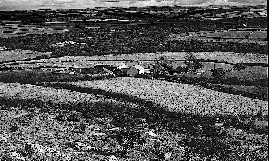
Someone once told me that the Trust was set up to enable the purchase and thus protection of a particular site as a nature reserve. I'm not sure whether this is strictly true but it's an interesting story. Apparently, in 1962, a small group of keen naturalists learned of the impending sale of an area of wetland not far from Truro. Concerned that the land would be sold and ploughed up or drained, thus destroying its wildlife interest, the group felt that action should be taken. The formation of the Cornwall Naturalists' Trust and its purchase of that land thus allowed one of our first nature reserves - Ventongimps Moor -to be established.
Thirty-eight years later, as the year 2000 commences, Ventongimps Moor is a thriving nature reserve supporting a rich mixture of wet and dry heath, mire and woodland habitats. I have no doubt that if it wasn't for the foresight of the Trust's founders the site would not be a wildlife haven in this millennium.
The Cornwall Naturalists' Trust is now the Cornwall Wildlife Trust and we manage a grand total of 47 nature reserves with an area of over 1,500 hectares.
They are spread across Cornwall from Caer Brān in West Penwith to Welcombe and Marsland, which bridges the Cornwall-Devon border in the north of the county, to the Tamar Estuary at the edge of Cornwall in the south-east. They comprise a wide range of wonderful wildlife habitats including woodlands, heathlands, mires and bogs, meadows, estuaries and one site owned for its special geological and geomorphological features.
There is no doubt that throughout the last quarter of the twentieth century the environmental movement has grown and the wildlife conservation ethic has been embraced by more and more people. The Trust's growth and the emergence of new funding sources reflect this mind change. With this support we are able to continue purchasing prime wildlife sites and managing them as nature reserves. Our reserves staff now numbers seven - compared to just three in 1992 - and a large pool of volunteers assists with many aspects of the section's operations.
So, at the dawn of the twenty-first century our morale is high and we're achieving much for the benefit of wildlife conservation. Despite our efforts, however, every year large areas of wildlife habitat are still being destroyed or are damaged through neglect or inappropriate management. Our agenda for the future should be to halt this habitat destruction and to ensure that the whole of the countryside is managed with wildlife in mind. We can achieve this aim by continuing to educate and inform people about the importance of nature, by influencing planners and policy makers, and by providing advice and information to landowners and managers.
In the absence of a "perfect world" we can ensure that oases of wildlife remain by acquiring and managing nature reserves. These wildlife havens will provide a source of plant and animal species into the future which will always be available to extend into a wildlife-friendly countryside when conditions permit. So here's to the success of the Trust in the twenty-first century, when we hope to continue developing and buying nature reserves to guarantee the continuation of Cornwall's wildlife into the next millennium.
Victoria Whitehouse